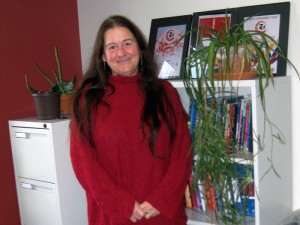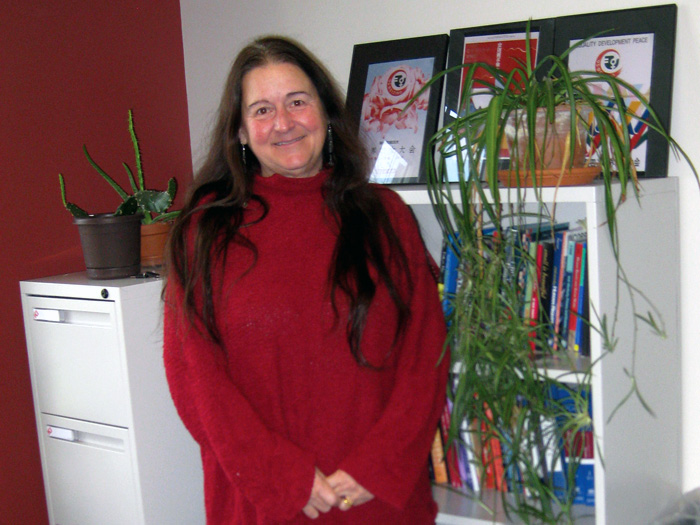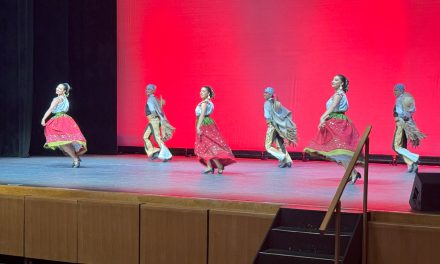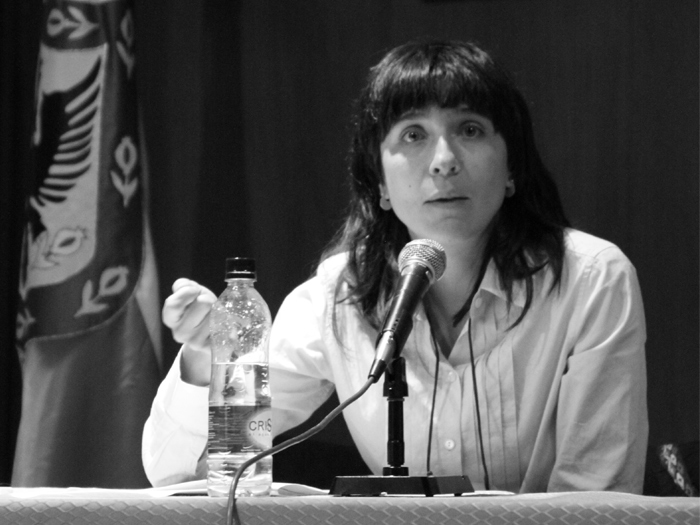
Dr. Lacey Sloan and faculty and students from the College's Social Work Department have been working to alleviate suffering in the aftermath of Superstorm Sandy.
Dr. Lacey Sloan of the College’s Social Work program, has teamed up with fellow faculty members and students from the program to work within the community to alleviate some of the suffering endured by victims of Superstorm Sandy.
Sloan explains that a multifaceted approach has been employed. “The Social Work program students and faculty have worked with Sandy victims on several fronts. The first week, student and faculty volunteers went to New Dorp and joined other community members collecting garbage and debris (for disposal into sanitation trucks that they followed); sorting clothes; and distributing food, water, blankets, etc. to those at Miller Field and the surrounding neighborhood. The second week, student and faculty volunteers helped move Sandy evacuees (and their pets) from Wagner High School to Bailey Seton Hospital. They also had volunteers at Mt. Manresa assisting play therapists who were working with child evacuees. Since that time, student and faculty volunteers have helped distribute Thanksgiving meals at Midland Beach neighborhoods, collect and distribute Christmas toys, continue to help clean up, and collect and distribute resources to five of our social work students who lost everything.” Also, on January 2, four Master’s of Social Work students from the University at Buffalo School of Social Work came to the College, hosted by our students and faculty, and provided further clean up assistance and other support for victims of Sandy.
Dr. Sloan and the other volunteers have accomplished and seen much since the storm, and they face a number of challenges. “As our students found out, the most challenging aspect of this work is to not cry when you hear how people’s lives have been affected,” Sloan explains. “People go into social work to help others and make the world a better place, and most are highly empathetic. It can be hard to listen to stories of lost lives, lost memories, and lost homes—stories told through tears—and not just cry with them. People in our profession often talk about vicarious trauma (when the helper is traumatized by the stories of victims), but many of our student volunteers were brand new to social work and had not yet learned how to deal with one’s own emotions when helping others. It can be a difficult lesson to learn.
“Another challenge was/is not being able to do all that is needed. For example, when moving evacuees from Wagner to Bailey Seton, the space quickly filled up leaving many people sitting in the hallway for hours with no bed or room assignment.”
Looking to the future, Dr. Sloan notes, “Now that the crisis is over, the challenge is to keep people engaged in supporting victims. It is a long-term process to heal from a trauma like Sandy.”
As she continues to work to bring relief to the many victims of Sandy, Dr. Sloan puts the experience into perspective. “It is always powerful when one is able to do something to help alleviate suffering, no matter the cause. In this situation, it helped reduce our own feelings of powerlessness to be able to directly help people in our community. The volunteers were powerless to stop the storm and the loss, but they could/can provide a helping hand, or lend an ear, or even give a hug. They can be the persons who bear witness to someone’s loss and trauma, document it, and help create a sense of safety and calm in the middle of a crisis. They can see that one person can make a difference to a victim, even with something as simple as giving someone a bottle of water. It also makes them all feel grateful for what we each have in our lives (family, friends, housing, and food). There are also powerful feelings of unity, of connectedness, when one looks around and sees everyone helping out. One of my favorite images of the first week or so was down at New Dorp where the Hallowed Sons motorcycle club had brought food to feed victims and volunteers, and next to them was food being served by a Sikh group—it was indeed the community coming together and it made me feel connected and united in our efforts.”



![[video] Tournament Honors Former CSI Basketball Players Lost On 9/11](https://csitoday.com/wp-content/uploads/2011/09/Dolphins-NY1-Tournament-of-Heroes.jpg)

![[video] ‘StarTalk’ debuts with Charles Liu, George Takei providing ‘warp drive’ lesson](https://csitoday.com/wp-content/uploads/2015/04/degreasse-liu.jpg)












